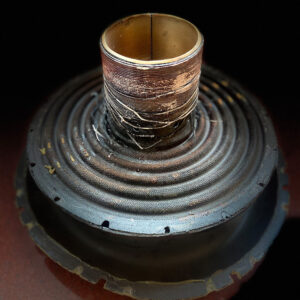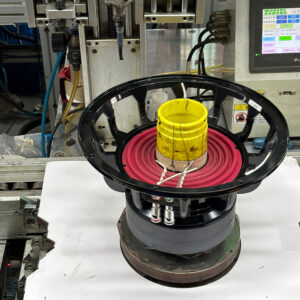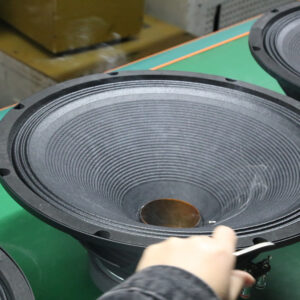The voice coil is the heart of a car subwoofer, converting electrical signals into sound. However, this delicate component is prone to damage from electrical and mechanical stress. Below is a simplified breakdown of the most common issues with voice coils, along with their causes, symptoms, and solutions.
1. Overheating and Burnout

Voice Coil Overheating and Burnout
Cause:
- Excessive power: Running the speaker beyond its rated power.
- Prolonged high volume: Overuse at maximum volume generates excess heat.
- Poor cooling: Insufficient airflow worsens overheating.
Symptoms:
- No sound or weak, distorted output.
- Burnt smell from the speaker.
Solution:
- Use an amplifier that matches the speaker’s power rating.
- Improve cooling (e.g., vented enclosures).
- Avoid extended use at max volume.
2. Wire Breakage

Voice Coil Wire Breakage
Cause:
- Vibrations: Repeated stress weakens the coil wire.
- Corrosion: Moisture damages the copper wire.
- Manufacturing defects: Poor insulation or winding quality.
Symptoms:
- No sound or intermittent output.
- Crackling or popping noises.
Solution:
- Replace or repair the damaged coil.
- Use corrosion-resistant materials or keep the speaker dry.
- Opt for high-quality speakers.
3. Misalignment or Deformation

Voice Coil Misalignment or Deformation
Cause:
- Physical shocks: Impacts during transportation.
- Overheating: Warping from extreme heat.
- Dust: Particles lodged in the gap between the coil and magnet.
Symptoms:
- Rattling or scraping sounds.
- Reduced clarity or performance.
Solution:
- Clean the voice coil gap to remove debris.
- Realign the coil manually or seek professional help.
- Avoid overheating by managing power levels.
4. Short Circuits

Voice Coil Short Circuits
Cause:
- Insulation breakdown: Caused by overheating or moisture.
- Defects: Poor insulation or wiring during production.
Symptoms:
- Drop in sound quality.
- Buzzing or hissing noises.
Solution:
- Replace the damaged coil if necessary.
- Use high-quality, well-insulated components.
- Protect speakers from moisture with weatherproof designs.
5. Mechanical Damage
Cause:
- Excessive bass: Over-driving the speaker cone.
- Impact: Physical damage from drops or shocks.
- Aging materials: Natural degradation over time.
Symptoms:
- Visible damage.
- Distortion or reduced output.
- Rubbing sounds from the coil.
Solution:
- Avoid pushing the speaker beyond its limits (e.g., EQ settings).
- Handle the speaker carefully.
- Replace old speakers when necessary.
6. Partial Coil Burn
Cause:
- Power spikes: Sudden surges partially damage the coil.
- Mismatched equipment: Uneven power from incompatible amplifiers.
Symptoms:
- Distortion at high volumes.
- Lower sensitivity or volume output.
Solution:
- Pair the speaker with a suitable amplifier.
- Use surge protectors or a stable power source.
Key Preventive Measures
- Match Power Ratings: Use a properly rated amplifier.
- Install Correctly: Ensure secure installation to minimize vibration.
- Ensure Cooling: Use well-ventilated enclosures to dissipate heat.
- Maintain Regularly: Clean dust and debris from the coil gap.
- Moderate Volume: Avoid prolonged use at maximum volume.
Conclusion
Voice coils are critical but fragile. Overheating, misalignment, wire breakage, and short circuits are the most common problems. By following preventive measures and using properly matched equipment, you can ensure your car speakers deliver high-quality sound for years.


